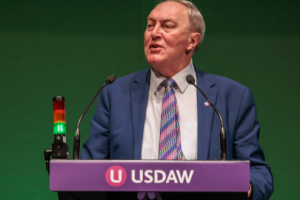While retail spending slowed after a busy festive period, consumers’ confidence in both their household finances and ability to spend within their means reached its highest point in over two years.
Spending on essential items increased 4.2% – noticeably higher than in December (1.8%). This was largely driven by a recovery in fuel spending, in light of the new energy price cap coming into effect 1 January, which saw a smaller decline (-9.7%) compared to December (-12.5%).
Growth in supermarket spending increased to 5.2% – up from 2.8% in December – on par with the growth seen in October (5.2%) and November last year (5.0%), as UK consumers returned to their regular routines after the Christmas break.
As concerns around rising food prices remains high (87%), two thirds (67%) are continuing to look for ways to reduce the cost of, or get more value from, their weekly shop.
Of these consumers, half (47%) are using loyalty schemes or vouchers to get money off shopping.
Two in five (39%) are shopping at multiple supermarkets to source a range of deals, while a similar proportion are buying discounted products nearing expiration.
In addition, almost a fifth are cutting back on buying meat, fish or other animal products as well as alcohol, while 16% have even been buying discounted festive food to save money.
Supermarket savings are also expected to impact Valentine’s Day celebrations, especially when it comes to gifts and food.
A meal-deal is on the menu for just over two in five of those making a home-cooked meal.
Even with these cutbacks, Brits expect to spend slightly more this Valentine’s Day compared to last year (up £6.40), likely due to rising prices.
In total, the average couple expects to spend £80.30 – with men expecting to spend over 50 per cent more than women (£96.70 compared to £60.70 for women).
Spending on non-essential items increased 2.6% in January – consistent with the growth seen in December and November last year, at 2.5% and 2.7% respectively.
This comes as over two fifths (43%) of consumers say they are planning to cut down on discretionary spending due to rising household bills, with many tightening their belts after the festive season.
Jack Meaning, chief UK economist at Barclays, said: “Increasing consumer confidence is a positive message for the UK outlook in 2024, as we see inflation continue to fall, real incomes rising and growing signs that interest rate cuts are coming.
“Spending looks to be on an upward trajectory, set to increase more than inflation in the coming months, which will be an important milestone for consumers and businesses who were squeezed throughout 2023.”
Total Till growth in January as Brits stick to simple winter meals
 Talking Retail Grocery and product news for independent retailers
Talking Retail Grocery and product news for independent retailers






